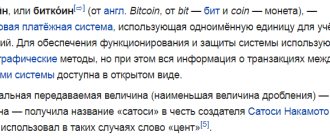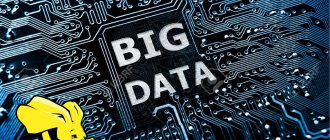The first part of the summary of Nathaniel Popper's book “Digital Gold” reveals the history of the development of technical thought in Bitcoin
Information about digital currencies has become an integral part of today's information space. Previously unfamiliar words bitcoin, blockchain, mining are increasingly found in news sections and are becoming part of everyday vocabulary. However, the relevance of the topic of cryptocurrencies has not yet been transformed in our society into the amount of knowledge that is necessary for a modern person. Finding themselves unexpectedly witnessing the birth of a new economic era, most of humanity looks with cautious curiosity at news reports about cryptocurrency rates, experiencing in the depths of their souls a feeling of anxiety from not understanding what is happening.
The most popular study in the world about the emergence of cryptocurrency is the book by American journalist Nathaniel Popper “Digital Gold. The Incredible History of Bitcoin, or How Idealists and Businessmen Are Reinventing Money." It was published back in 2015 and, of course, today could be supplemented with new interesting facts. But still, this work remains a relevant and comprehensive source of information on the topic of cryptocurrencies. Therefore, on its basis, we have prepared a brief introduction to the history of Bitcoin, or, to be more precise, a story about the people who made Bitcoin what it is now.
The Birth of an Idea: Public Key Cryptography
The prehistory of Bitcoin begins in the 70-80s of the last century, when, thanks to mathematicians from Stanford and the Massachusetts Institute of Technology, an encryption method that could not be hacked appeared. Its essence lies in the mathematical relationship between two keys, which are a random set of characters. The first, public, key performs the function of an address to which encrypted information is received, readable only by the owner of the second, secret, key.
The new technology, called "public key cryptography", is of great interest to the so-called cypherpunks. This group of people, united by the desire to maintain confidentiality, focused special attention in their activities on the field of finance. In a world of cashless payments, when analysis of a credit card account statement provides information about the preferences and travel routes of its owner, money has proven to be the most sensitive area for privacy.
The idea of digital cash called “CRASH”, or “Crypto cAHS”, which leaves no record of its owner, was proposed by Hal Finney, one of the active participants in the anonymity movement.
Cypherpunks rallied around a project to create a universal money that would perform the standard task of determining the price of goods and services around the world and would also be confidential, durable, convenient, divisible, uniform, and valuable.
In 1997, the community became acquainted with the Hashcash project. Its author, Adam Beck, proposed using a cryptographic hash function to prevent unlimited copying of digital cash. The essence of his idea was that coins would appear as a result of a computer solving a mathematical problem. One of the weaknesses of Beck's system was that the coins turned out to be disposable, that is, to perform the next operation it was necessary to work on their creation again. This problem was soon solved by the efforts of Nick Szabo, Wei Del and Hal Finney, who each came up with ideas for allowing digital coins to be reused. However, the question of how to convince people of the value of digital money and solve the problem of decentralization of currencies has stopped developments in this direction for a long time.
Digital gold, the incredible story of bitcoin, Popper N., 2016
Digital Gold, The Incredible History of Bitcoin, Popper N., 2016. All software product names are registered trademarks of their respective companies. No part of this publication may be reproduced for any purpose in any form or by any means, electronic or mechanical, including photocopying and recording, without the written permission of Dialectics Publishing House. " Preface. What is money? We use them every day, we talk about them a lot, we want them. But try to define them right now: “Money is.” If you are faced with a difficulty, then know that you are not alone. Most people are accustomed to some kind of intuitive understanding of this essence, but nothing more. Questions like “What is this?” “Why do they have these particular shapes and properties?” and “Are there better options?” sound much less often than the question “How to earn them?” Table of contents. Preface. Introduction. Part I. Part II. Application. Technical aspects of Bitcoin.
Download the e-book for free in a convenient format, watch and read: - fileskachat.com, fast and free download.
Below you can buy this book at the best price with a discount with delivery throughout Russia. Buy this book
How to open a file
Copyright holders
- pdf - Yandex.Disk.
Publication date: 08/03/2019 04:12 UTC
Popper :: 2016 :: bitcoin :: history
See also textbooks, books and educational materials:
- Economics in terms, concepts and ideas, Textbook, Kovnir V.N., Murzina I.V., 2016
- Correctness of Russian speech, Handbook of speech culture, Part 1, Novikova L.I., 2016
- Anthropology of play and childhood, Blinova A.N., Chernova I.V., 2016
- Times and law, Krasheninnikov P., 2016
The following textbooks and books:
- Goodbye poverty, Clark G., 2012
- Econodynamics, theory of social production, Pokrovsky V.N., 2014
- Theory of forecasting and decision making, Sargsyan S.A., 1977
- Theory and methods of decision-making, as well as Chronicle of events in Magic Lands, Larichev O.I., 2000
Previous articles:
- Economics, grades 10-11, Methodological manual, Dikhtyar T.L., 2018
- Banking, cheat sheet, Shevchuk D.A., Shevchuk V.A.
- History of Economics, Shevchuk D.A.
- The beginnings of economics, a textbook for extracurricular work in grades 5-6 of general education organizations, Ermakova I.V., Protasevich T.A., 2015
<< Previous articleNext article >>
Satoshi Nakamoto
After the Hashcash project, we had to wait more than 10 years for new ideas. In August 2008, a rationale for a new digital coin called Bitcoin appeared in a cryptographic community mailing list. The developer researcher introduced himself as Satoshi Nakamoto. Based on the work of his predecessors, he described on 9 pages the operation of a financial network, transactions in which were carried out instantly, without commissions and controlled by each of its participants.
Using two-key cryptography, the creator of Bitcoin ensured anonymity and accurate payment delivery. To ensure that the sender has digital coins, Satoshi used blockchain, a public ledger that stores information about all transactions with Bitcoin. The principle of the network’s operation was that its nodes approve the payment only after checking with the blockchain data and immediately make an entry in it about the new operation.
The fundamental principle of the system’s operation was the introduction of incentives in the form of new coins for those participants who enter data into the blockchain. The right to make an entry and, accordingly, to receive a reward was granted only to the winner of a kind of competition between nodes of the Bitcoin network to calculate a mathematical equation. The hash function previously proposed by Adam Beck was used in the content of these problems. To resolve disagreements related to determining the winner or making changes to the software, Satoshi proposed using the most democratic method - obeying the decision of the majority of network users.
However, the significant innovations proposed by Satoshi did not generate a strong response. In the first week, his work received attention from only two community members. In their feedback, they expressed doubts about the security of the Bitcoin network from hackers, as well as the motivation of participants to download a blockchain that will become increasingly heavier.
For a long time, the only defender of Bitcoin was Hal Finney, who, after corresponding with Satoshi, wanted to see not only the theory, but also the program code of the system. In early 2009, after several months of improvements, the Bitcoin network program was distributed to community members. In it, Satoshi already provided for an increase in the complexity of calculating the hash function as the total network power increased, and also limited the issue of Bitcoin to 21 million coins.
The Bitcoin network started working, but for a long time it consisted only of Satoshi and Hal’s computers. The first bitcoin transaction also occurred between them, when Satoshi, testing the system, sent 10 bitcoins to his colleague. The project, despite Satoshi’s efforts, did not receive support. In turn, Hal, wanting to avoid wear and tear on the computer, disconnected from generating coins. Soon he became seriously ill and was forced to completely withdraw from the project.
The Bitcoin network has switched to waiting mode for new enthusiasts and experimenters.
Nathaniel Popper on money, Bitcoin and the struggle between Silicon Valley and Wall Street
11/18/2015 Andrey Asmakov
#Bitcoin#Silicon Valley#Popper#Wall Street
The University of Pennsylvania's online analytical magazine [email protected] recently spoke with Nathaniel Popper, a business writer for the New York Times and author of Digital Gold: The Untold Story of Bitcoin, a well-known book in the crypto community, to learn more about the emergence of digital gold. currency and what awaits it next. Popper, in particular, talked about how Silicon Valley and Wall Street are fighting over the future of the blockchain.
Below is a shortened version of the interview.
What attracted you to the history of Bitcoin? And why did you decide that it was important to tell it?
Popper : I first wrote about Bitcoin in the New York Times in 2013. We published the article very late because we had absolutely no idea what to do with this topic. Most editors believed that it was a fashionable thing like a Tamagotchi, which would sooner or later sink into oblivion, and therefore they could not pay attention to it.
Many of the articles that have already been written about Bitcoin mainly focused on the technology, which was quite complex. I wrote my first Bitcoin story about the Winklevoss brothers and their $11 million cryptocurrency stash. Thanks to this introduction, I was able to ask some questions and understand why Bitcoin is actually worth something. I asked, “How exactly do you own bitcoins? What do you need to do to buy them? The most basic questions that interest people.
The article was the most popular article in the New York Times for the next week. I still thought that Bitcoin was a trinket with a short life, but the story interested readers, and I realized that something related to the fundamental questions of money had captured their attention.
So I spent the next year writing about Bitcoin, and towards the end literary agents started writing to me and saying it was a great story. I mostly wrote about people, not technology. I delved deeper into the topic and saw that many very serious people take Bitcoin just as seriously.
My colleague Andrew Sorkin once said, “It's a gold rush. A story about people. You have to tell it. You're in the thick of it. It's your responsibility to tell this story." I tried to understand why this idea resonated so deeply with people, and in the end I decided that it was okay to spend a year trying to understand it. Most people thought at first that it was some kind of joke. Even those who understand cryptography thought that this whole idea, when it first appeared, would soon fail.
For two years, Bitcoin was worth nothing at all. Now let's fast forward to the present day. The Economist has a major story on blockchain and how it will change every industry where trust is needed. Every bank on Wall Street has a Bitcoin task force. My goal was to understand how Bitcoin went from a toy to something that central banks and Wall Street take seriously.
Many people interested in and knowledgeable about Bitcoin say that today it is akin to the Internet in 1994. Then everyone asked: “What do I care about this? Only five million people have email. Why should this interest me? My friends don’t have email, I don’t need it.” People debated whether the Internet would be a means of communication or just a platform for publishing materials. The development of the basic infrastructure took a long time, but once everything was ready, the Internet connected everything: communication, media, publishing.
This is one way to look at Bitcoin and blockchain. This does not necessarily mean that I am convinced that things will be exactly the same with Bitcoin. But the history of Bitcoin is truly interesting, and what it has already achieved is amazing. Every venture capital firm in Silicon Valley now has an investment in Bitcoin or blockchain.
One of the most interesting things about your book is the story of the tug-of-war between Silicon Valley and Wall Street. What's the big deal?
Popper : First, the book talks about early technological attempts to create digital money to counter Wall Street. Some of this happened in the hacker community. The cryptopunks of the 1990s wanted to create money that authorities couldn't trace through credit card transactions. Experiments in this area led, for example, to DigiCash, which ultimately failed. On the other hand, there was PayPal, which was kind of like Bitcoin at first. They wanted to create a financial system outside of government control. In Argentina, for example, PayPal was used to transfer money to another economy, where, unlike the local one, everything worked. But in the end, all these ambitions went to waste. Now it is a big successful company. But the guys who founded it, Peter Thiel and Max Levchin, sometimes talk about it as a failure. It is now just another payment system that works the same way as Visa and American Express. However, part of their story is the desire to disrupt the existing financial industry.
Nobody in Silicon Valley was in finance. Yes, they have made breakthroughs in other areas, including the media. However, finances did not let anyone get close to them. For example, only banks could store money, and only banks could make transactions. PayPal has slightly tried to change this, but in fact it is simply an interbank intermediary. Therefore, the center of power remained in the Wall Street area, and there were also the main centers of influence in the United States. But the guys from PayPal gradually reached Bitcoin. Peter Thiel or Marc Andreesen are now saying that this is the only chance to break the hegemony of Wall Street. Therefore, Silicon Valley took on finance - and in a way that no one had done before. There, in the Valley, there is a feeling of confidence and even pride; people believe that their finest hour has come. Bitcoin is not the only tool in this process. But through it you can understand how Silicon Valley is challenging Wall Street and creating a decentralized network like the Internet that could crush the powerful and centralized financial industry.
How does Wall Street respond to this?
Popper : Over the past year, Wall Street has become interested in this technology. When it is said that Bitcoin was designed to break the hegemony of Wall Street and central banks, there is not a hint of irony in this. But now they are the ones who are most interested in Bitcoin. Blockchain conferences are held there every week. They are sponsored by Citigroup or Santander, with representatives from the Bank of England and the Federal Reserve present.
Banks are trying to harness technology, but not necessarily in obvious ways. For example, they can create their own payment systems for instant transfers. Now it takes two to three days for the translation. Banks need to speed this up, and they think blockchain can help them do it. Technology is also talked about in the context of more complex transactions - for example, bonds, shares and loans. Nasdaq, for example, recently created their own blockchain system. They trade shares of private companies on their personal blockchain.
What do you think about such a thing as trust in the system?
Popper : When talking about trust, it's important to note that Bitcoin has gone from a point where it was worth nothing to a point where it has value. How did he manage to create this network effect and acquire users? Initially, this happened through the well-known Silk Road, a site where you could buy and sell drugs. Silk Road appeared in 2011, when Bitcoin was worth almost nothing, and became the first place where Bitcoin could be used. This is how Bitcoin was proven to work.
In the first four months of Silk Road's operation, the price of Bitcoin rose from 50 cents to $30. Bitcoin made it possible to do things that were previously impossible, such as sending money to Amsterdam to pay for heroin. Transactions took place without interruption, and no one needed intermediaries. This could be seen as a black mark in Bitcoin's history, but people thought, "Wow, someone sends $100 to someone they don't know in Amsterdam, and the money comes through every time!"
This is the most wonderful thing about Bitcoin. A transaction between two untrustworthy people. This is exactly what Bitcoin offers and what other existing systems cannot offer.
Found an error in the text? Select it and press CTRL+ENTER
Links[edit]
- "Papers of Nathaniel Popper". New York Times
. - NYT Business Desk Hires Popper from LATimes
- ^ a b
"Nathaniel Popper".
Connected
. Retrieved December 8, 2016. - Popper, Nathaniel (2015). Digital Gold: Bitcoin and the Inside Story of the Losers and Millionaires Trying to Reinvent Money
. Harper. item 416. ISBN 0062362496. - Graphics, FT Interactive. "Best Business Books". FT Business book of the year award
. Retrieved September 12, 2022. - Popper, Nathaniel. “Never pay attention to Facebook; The Winklevoss twins rule in digital money". DealBook
. Retrieved September 12, 2022. - "Nathaniel Popper". HarperCollins USA
. Retrieved September 12, 2022. - "Nathaniel Popper". New York Times
. ISSN 0362-4331. Retrieved September 12, 2022.











